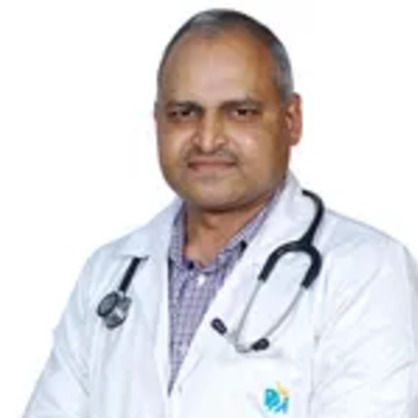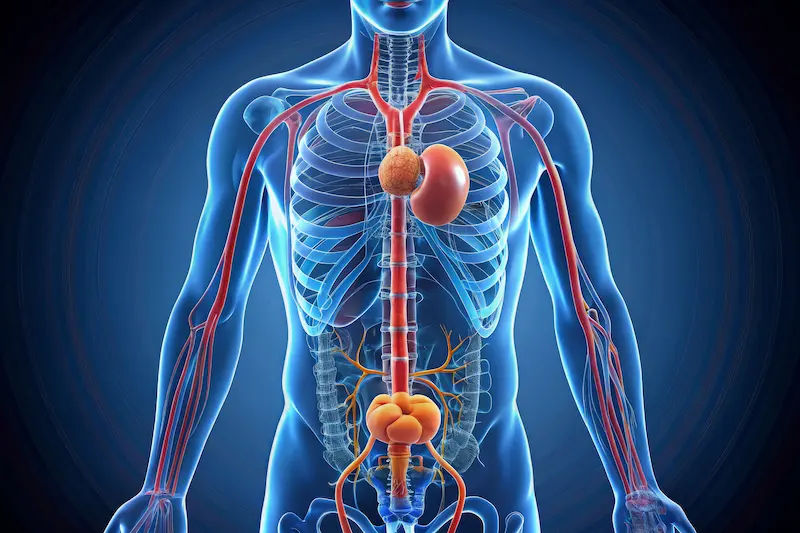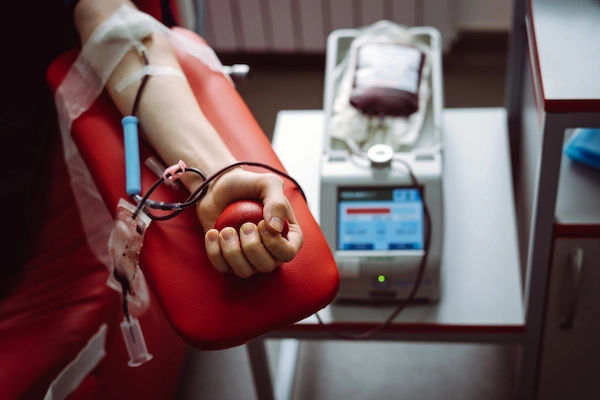Guide to Are You Scheduled Surgery Know Recent Advances Anaesthesia
Discover recent anaesthesia advances for your scheduled surgery. Understand ERAS protocols, multimodal pain control, and new monitoring tech for a safer, faster recovery.

Written by Dr. M L Ezhilarasan
Reviewed by Dr. Mohammed Kamran MBBS, FIDM
Last updated on 25th Oct, 2025

Introduction
If you’re scheduled for surgery, you probably have questions—especially about anaesthesia. The good news is that recent advances are making surgery safer, gentler, and easier to recover from than ever before. From precise monitoring that personalises drug doses, to ultrasound-guided nerve blocks that reduce pain and nausea, the operating room and recovery pathways have been transformed in just the past decade. This guide breaks down what’s new, why it matters for your comfort and safety, and how you can prepare to get the best results.
We’ll start with what top-ranking medical sources say about recent advances in anaesthesia for surgery, then dig into key innovations: safety checklists, monitoring, airway technology, regional blocks, opioid-sparing approaches, enhanced recovery (ERAS) protocols, and smarter fluid and blood management. You’ll also learn what to discuss with your anaesthetist, how to plan your recovery, and when to seek help. Along the way, we’ll include real-world data and practical tips tailored for patients and families. Whether you’re having day surgery or a major operation, understanding these recent advances can help you feel informed, prepared, and confident.
What top-ranking pages say—and what do they miss?
Common themes in leading resources
- Patient safety has improved substantially over the past 10–15 years thanks to standardised checklists, better monitoring, and team communication. The WHO Surgical Safety Checklist is consistently highlighted for reducing complications and deaths in major surgeries.
- Enhanced Recovery After Surgery (ERAS) pathways reduce complications, shorten length of stay, and speed return to normal activity by combining evidence-based steps before, during, and after surgery
- Regional anaesthesia and ultrasound guidance have expanded pain-control options, reducing opioid use and side effects while enabling earlier mobilisation
- Better airway tools (like videolaryngoscopy) and oxygenation strategies improve first-pass intubation success and safety
- Standardised approaches to preventing postoperative nausea and vomiting (PONV) help patients feel better sooner.
Gaps we’ll help fill
- Practical, patient-focused examples of how these advances affect the day of surgery and recovery at home.
- Newer medications (e.g., fast reversal agents and modern sedatives) and how they may change your experience.
- What you can do now—prehabilitation, nutrition, and questions to ask—to benefit from these advances.
Unique insight: Think of anaesthesia advances as a relay team—no single technology is a magic bullet, but together they shorten each “leg” of your surgical journey: preparation, the operation itself, and your recovery.
Consult a Top General Physician
Safety upgrades: checklists, monitoring, and awareness prevention
Checklists that save lives
- What it is: The WHO Surgical Safety Checklist prompts the team to confirm identity, site/side, allergies, anticipated blood loss, critical steps, and recovery plans.
- Why it matters: In a multicentre study, major complications fell from 11.0% to 7.0% and deaths from 1.5% to 0.8% after implementing the checklist. That’s a meaningful difference for real patients having real surgery.
Modern monitoring for personalised care
Continuous capnography (CO2 monitoring) confirms safe breathing and ventilation in real time.
Depth of anaesthesia monitors (like processed EEG/BIS) help tailor drug doses and may reduce the risk of awareness during total intravenous anaesthesia (TIVA), especially in higher-risk cases.
Noninvasive blood pressure, oxygen saturation, temperature, and sometimes noninvasive hemoglobin give a clearer picture without extra needles.
- Unique insight: When the team can “see” the effect of each drug and intervention minute by minute, they can use less drug to get the same effect—often translating to faster wake-ups and less grogginess.
What does this mean for you?
Expect a “time out” before your surgery and verification checks—these are for your safety.
If you’re worried about awareness, ask whether depth monitoring is appropriate for your case. For many surgeries, standard monitoring is sufficient; for TIVA or high-risk patients, depth monitoring may add reassurance.
Prehabilitation and pre-op optimisation you can start today
The ERAS mindset before the operation
- Prehabilitation before surgery combines targeted exercise, breathing training, nutrition (including protein), anaemia correction, smoking cessation, and stress management to build “physiologic reserve.”
- Evidence shows ERAS-style pre-op optimisation is linked to fewer complications and shorter hospital stays.
Simple wins you control
- Activity: Even 10–20 minutes of brisk walking most days can improve your conditioning. If you have time, a supervised prehab program tailored to your surgery is ideal.
- Nutrition: Aim for protein at each meal (1.0–1.2 g/kg/day unless your doctor advises otherwise). If you’re undernourished or have diabetes, ask about pre-op diet plans.
- Anaemia: Treating iron deficiency or low B12/folate can reduce transfusion risk. Apollo 24|7 offers convenient home collection for tests like CBC, ferritin, or HbA1c if requested by your care team.
- Smoking: Quitting even 2–4 weeks before surgery reduces lung and wound complications.
- Meds: Bring an up-to-date medication list. Ask which drugs to stop (e.g., blood thinners) and which to continue.
When to get help?
If you have breathlessness, chest pain, or poorly controlled conditions (e.g., blood pressure, diabetes), consult your doctor early. If symptoms persist beyond two weeks, consult a doctor online with Apollo 24|7 for further evaluation and optimization.
Airway and oxygenation advances: breathing made safer
Videolaryngoscopy and first-pass success
- What’s new: Videolaryngoscopy uses a tiny camera on the laryngoscope to give the anaesthetist a better view of the vocal cords, improving the odds of placing the breathing tube on the first attempt.
- Evidence: A Cochrane review found videolaryngoscopy improved glottic visualisation and may increase first-pass success, especially in difficult airways.
- Why it matters: Fewer attempts can mean less trauma, lower oxygen dips, and a smoother start to your surgery.
High-flow nasal oxygen (HFNO)
- What it is: Humidified oxygen delivered at high flow through soft nasal prongs that supports oxygenation during sedation, preoxygenation, and challenging airways.
- Why it matters: HFNO can extend the safe “breath-holding” time during intubation and reduce the risk of desaturation. It’s particularly helpful in obese patients or those with sleep apnoea.
What you’ll notice?
You may see a camera-assisted device used for intubation or feel warm oxygen through your nose during preparation. These tools are chosen based on your airway assessment to make breathing safer.
Ultrasound-guided regional blocks and new pain strategies
Ultrasound makes nerve blocks more precise
- What’s new: Using ultrasound, anaesthetists can see nerves, vessels, and needle tips in real time to place local anaesthetics exactly where needed.
- Benefits: Better pain relief, fewer needle attempts, and reduced risk of complications. In many procedures—shoulder, knee, breast, abdominal (e.g., TAP, PECS, erector spinae plane blocks)—regional anaesthesia can reduce opioid requirements and speed up mobilisation.
- Unique insight: Ultrasound has expanded “fascial plane” blocks, which bathe a broader area with local anaesthetic for multimodal analgesia without needing to target tiny nerves.
Opioid-sparing pain control
- Multimodal analgesia combines paracetamol/acetaminophen, NSAIDs (if safe), regional blocks, and sometimes ketamine or IV lidocaine to reduce opioid use and side effects like nausea, constipation, and grogginess.
- If you’re concerned about opioids, tell your team; there are many alternatives tailored to your surgery.
What to ask?
- “Is a regional block right for my surgery?”
- “How long will the block last, and what’s the plan when it wears off?”
- “Can we use an opioid-sparing pain management approach?”
Smarter medications and smoother wake-ups
Fast reversal and fine-tuned dosing
- Sugammadex reversal agent: This medication can rapidly and predictably reverse the effects of certain muscle relaxants (rocuronium/vecuronium), often shortening time to safe breathing and reducing residual weakness risks compared with older reversal drugs.
- Target-controlled infusions (TCI) and depth monitors: Computer-assisted pumps can deliver anaesthetic at a concentration linked to your body’s needs, with depth monitoring helping avoid under- or over-dosing.
- Newer sedatives: Agents like remimazolam (a short-acting benzodiazepine sedative) allow quick onset and recovery in procedural settings, with a safety profile that includes reversal if needed. Your team will choose based on the type of surgery, your health, and local availability.
Nausea prevention gets personal
The latest PONV guidelines recommend risk-scoring (e.g., smoking status, female sex, history, opioid use) and giving 2–3 antiemetics for higher-risk patients. Combinations may include ondansetron, dexamethasone, droperidol, or aprepitant.
- Unique insight: Using regional blocks and opioid-sparing strategies often reduces nausea before antiemetics are even needed—another reason to ask about multimodal plans.
What you’ll feel
Many patients wake up faster and clearer than in the past, walk sooner, and eat earlier—all of which are linked to better outcomes.
Fluids, temperature, and blood: finer controls, fewer complications
Goal-directed fluid therapy (GDFT)
- What it is: Instead of “one-size-fits-all” IV fluids, clinicians use dynamic measures (blood pressure trends, heart rate, sometimes ultrasound or Doppler) to tailor fluid and vasopressor therapy.
- Why it matters: Avoids both dehydration and fluid overload, which can reduce complications like nausea, kidney stress, and delayed gut recovery. This aligns closely with ERAS guidance.
Unique insight: “Just enough fluid” is now a key quality target—patients often feel less bloated and recover bowel function sooner.
Active warming and glucose control
- Active warming blankets and warmed IV fluids keep you at normal temperature, which reduces surgical site infections and bleeding, and improves comfort.
- Balanced glucose control (not too high, not too low) minimises infection risk and supports wound healing.
Patient blood management
- Techniques to reduce transfusion include treating pre-op anemia, minimally invasive surgical techniques, cell salvage, and using tranexamic acid to reduce bleeding in appropriate cases.
- Ask: “Have my iron levels been checked?” “Is tranexamic acid used for my type of surgery?”
After surgery: ERAS, day-case care, and digital follow-up
ERAS in action after your operation
- Early oral intake: Unless contraindicated, sipping and then eating sooner supports gut recovery and energy.
- Early mobilisation: Sitting up and walking (with help) soon after surgery reduces clots and speeds return to normal activities
- Tailored pain plans: Regular non-opioid meds plus as-needed rescue keep pain controlled without excess sedation.
Same-day surgery recovery tips
- Have a responsible adult stay with you for 24 hours.
- Hydrate and eat light, protein-rich foods unless told otherwise.
- Use your incentive spirometer (if given) and do gentle leg exercises.
If your condition does not improve after trying these methods, book a physical visit to a doctor with Apollo 24|7.
Telemedicine and remote checks
- Many teams use telephone or app-based check-ins to monitor pain, wound photos, and activity. Wearables (step counts, heart rate) can flag issues earlier.
- If you develop persistent fever, increasing pain, shortness of breath, or wound drainage, consult a doctor online with Apollo 24|7 for prompt assessment.
Special considerations: kids, older adults, and sleep apnoea
Children
Paediatric anaesthesia uses weight-based dosing, often with mask induction and parent presence depending on hospital policy. Modern pain strategies and blocks can minimise opioids and get kids home sooner.
Older adults
Anaesthesia risks in older adults relate to frailty, medications, and cognitive vulnerability. Recent advances focus on gentle dosing, depth monitoring, meticulous fluids, and delirium prevention (glasses, hearing aids, early mobilisation).
Obstructive sleep apnoea (OSA)
Airway plans, HFNO, and careful opioid-sparing analgesia reduce breathing risks. If you use CPAP at home, bring your device if instructed.
What to discuss with your anaesthetist?
- Your priorities: “I’m most worried about nausea” or “I want to avoid strong opioids if possible.”
- Your airway: prior intubation issues, snoring/OSA.
- Medications and supplements: especially blood thinners or herbal remedies.
- Recovery planning: when you can eat, mobilise, and return to work or sport.
Conclusion
Surgery is a team sport, and anaesthesia is your safety net, coach, and comfort specialist all at once. Thanks to recent advances—smarter monitoring, safer airway tools, ultrasound-guided blocks, tailored drug delivery, and ERAS pathways—patients are going home sooner, feeling better, and getting back to life faster. The most important part you play is preparation: share your full medical history, prioritise prehabilitation, and discuss your goals (like minimising nausea or avoiding opioids) with your anaesthetist. On the day, expect careful checks and personalised care; after the operation, focus on early movement, good nutrition, and watching for warning signs.
If recovery isn’t going as expected—persistent vomiting, shortness of breath, fever, or uncontrolled pain—don’t wait. If symptoms persist beyond two weeks, consult a doctor online with Apollo 24|7 for further evaluation, or book a physical visit if advised. With the right plan and the right advances working for you, your surgical journey can be safer, smoother, and more predictable than it’s ever been.
Consult a Top General Physician
Consult a Top General Physician

Dr. Harshendra Jaiswal
General Physician/ Internal Medicine Specialist
12 Years • MBBS , MD (General medicine)
Kolkata
108 DHANA DHANVANTARI Clinic, Kolkata
(25+ Patients)

Dr. Swagata Sircar
General Physician/ Internal Medicine Specialist
8 Years • MBBS, MD General Medicine
Kolkata
HealthYou Speciality Clinic & Diagnostics., Kolkata

Dr. Mounika
General Physician/ Internal Medicine Specialist
4 Years • MBBS, MD (General Medicine)
Mahabub Nagar
SVS HOSPITAL, Mahabub Nagar

Dr. Zulkarnain
General Physician
2 Years • MBBS, PGDM, FFM
Bengaluru
PRESTIGE SHANTHINIKETAN - SOCIETY CLINIC, Bengaluru

Dr. Dhanraj K
General Physician/ Internal Medicine Specialist
25 Years • MBBS, MD Internal Medicine - Osmania Medical College, Hyderabad
Hyderabad
Apollo Hospitals Jubilee Hills, Hyderabad
(400+ Patients)
Consult a Top General Physician

Dr. Harshendra Jaiswal
General Physician/ Internal Medicine Specialist
12 Years • MBBS , MD (General medicine)
Kolkata
108 DHANA DHANVANTARI Clinic, Kolkata
(25+ Patients)

Dr. Swagata Sircar
General Physician/ Internal Medicine Specialist
8 Years • MBBS, MD General Medicine
Kolkata
HealthYou Speciality Clinic & Diagnostics., Kolkata

Dr. Mounika
General Physician/ Internal Medicine Specialist
4 Years • MBBS, MD (General Medicine)
Mahabub Nagar
SVS HOSPITAL, Mahabub Nagar

Dr. Zulkarnain
General Physician
2 Years • MBBS, PGDM, FFM
Bengaluru
PRESTIGE SHANTHINIKETAN - SOCIETY CLINIC, Bengaluru

Dr. Dhanraj K
General Physician/ Internal Medicine Specialist
25 Years • MBBS, MD Internal Medicine - Osmania Medical College, Hyderabad
Hyderabad
Apollo Hospitals Jubilee Hills, Hyderabad
(400+ Patients)
More articles from General Medical Consultation
Frequently Asked Questions
Will I be awake during my surgery?
It depends on the procedure. Many operations use general anaesthesia; others use regional anaesthesia with light sedation. Ask your anaesthetist which approach fits your surgery and medical history.
How do regional anaesthesia ultrasound blocks help me?
Ultrasound-guided blocks improve precision and can reduce pain and opioid use for 8–24 hours or more, supporting enhanced recovery after surgery protocols and easier early mobilisation.
What can I do to prevent postoperative nausea and vomiting?
Share your PONV history, consider an opioid-sparing pain plan, and ask for risk-based antiemetics. This personalised approach to postoperative nausea and vomiting prevention is a key recent advance.
Are there new drugs that make recovery quicker?
Yes. Depth-guided dosing, target-controlled infusions, and agents like the sugammadex reversal agent help you wake clearer and breathe safely sooner after surgery.
When should I seek help after going home?
Call your team or consult a doctor online with Apollo 24|7 if you develop persistent vomiting, severe pain unrelieved by medication, shortness of breath, fever, chest pain, or increasing wound redness/drainage.




